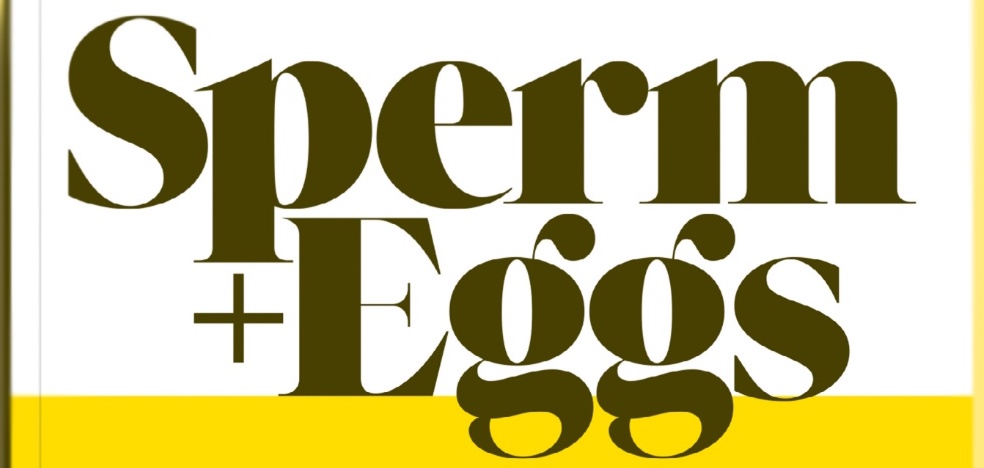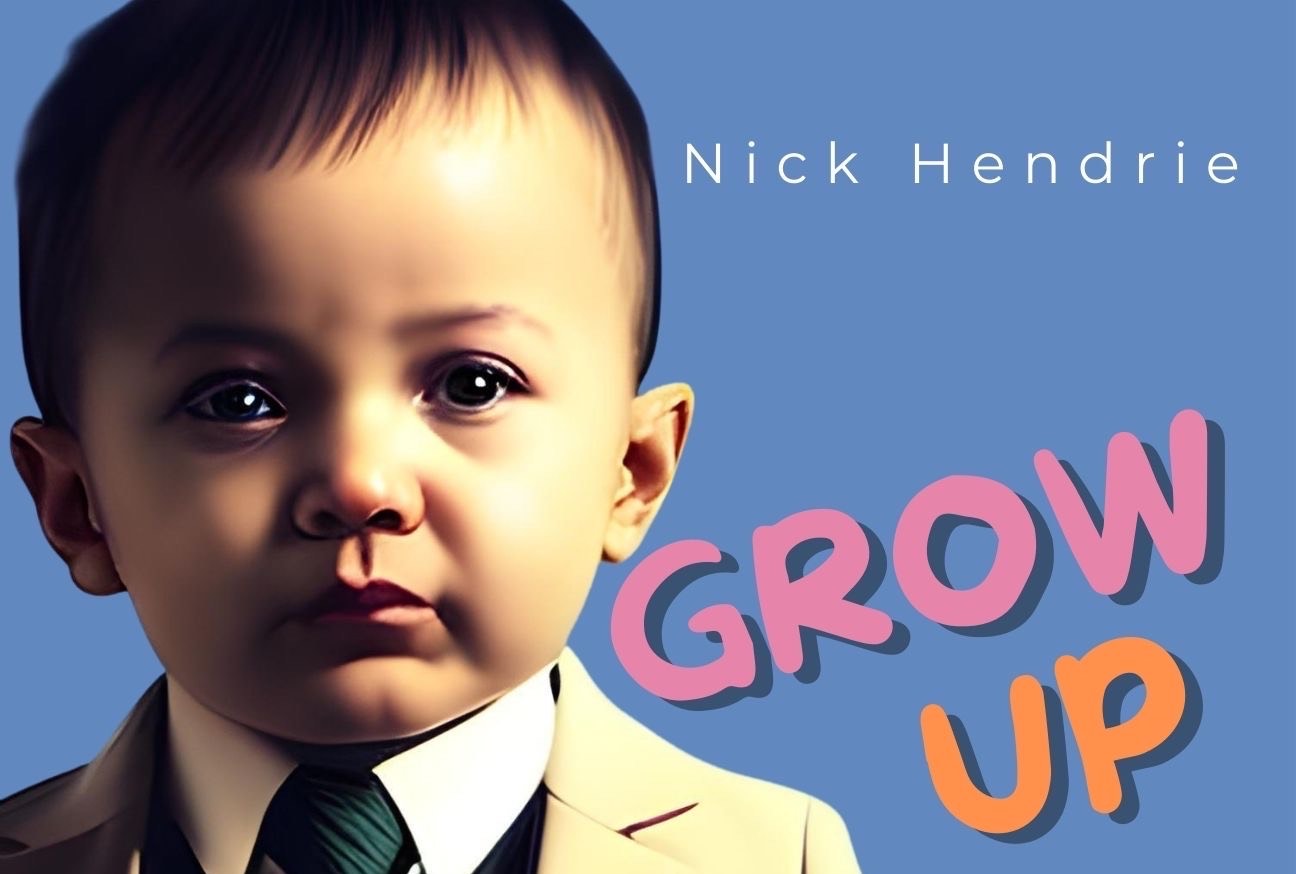2023 Guide To Using Comedy In Marketing
INTRODUCTION
In a World where people are perpetually consuming content, the contest to get your message heard has never been more frantic.
In 2020 Forbes calculated our average content watch time at 6 hours 59 minutes per day. We carry our screens devoutly, so the opportunity to scroll, click and swipe is always, quite literally, at hand. The natural conclusion is that the opportunities to reach people with a message are more abundant than before.
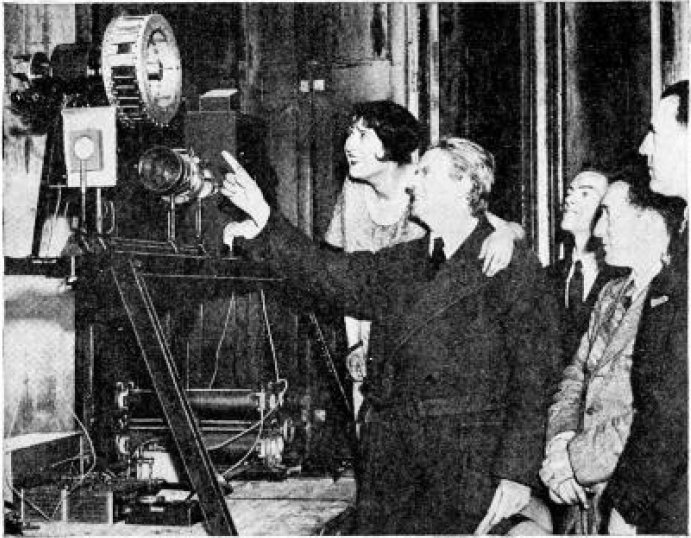
Things have moved on a touch from John Logie Baird and his mechanical TV
Indeed, as the content economy has grown exponentially, the number of ads has grown with it. But this approach isn’t working. Marketing is at a crossroads. There’s a recognition that the old approaches are failing, and the response, so far, has been flawed.
‘We tried to change the advertising ecosystem by doing more ads, and all that did was create more noise’
Marc Pritchard (Chief Brand Officer, Proctor and Gamble)
Those pesky consumers are pushing back and it’s become adversarial. 46.2% of 16-24 year olds have an ad blocker. A generation of ‘skippers’ (people who skip ads or intros, not sea captains) have put a vertigo-inducing tariff on attention. In fact studies estimate that our attention span has dropped by 33% since 2000.
Did You Know…
Contrary to folklore (and Finding Nemo), goldfish actually have a better average attention span than humans, coming in at 9 seconds vs the average human attention span of 8 seconds.
So what is a brand to do to get heard? Our answer is simple. Use cute baby animals comedy.
WHY BRANDS SHOULD USE HUMOUR MARKETING
Comedy is the most engaging form of content on social platforms. That should be a suitably compelling reason, but let’s break down what that means for brands…
Comedy Sells
An individual’s attitude to a brand is highly correlated to their purchase intention (Eisend 2009), and humorous content is proven to enhance perception of a brand.
Comedy Is Shareable
People gain kudos, or to be scientific, receive ‘social capital’ from sharing something that makes their peers laugh. This means there’s a huge upside. Create something that ‘goes viral’ and you’ve got serious value for money. How much would you pay for a video that garners 27,000,000 views? Dollar Shave Club shelled out the measly sum of $4,500.
Comedy Grabs Attention
Using comedy in an original way that aligns with your brand immediately helps you to stand out. Placing comedy in an unexpected place, or one that is surrounded by mundanity, enhances the effect further.
Comedy Is Memorable
The Humour Effect has been investigated and proven in rigorous studies to show positive impact of memory and recall, and this occurs regardless of a viewer’s mood at the time.
Comedy Filters Your Audience
For some products with a clearly defined audience, comedy can help you connect deeply. If your audience can be profiled as appreciating a certain sense of humour then you can be strident in using otherwise ‘risky’ comedy, knowing that your customers will love you more for excluding others who in their eyes ‘don’t get it’.
IS HUMOUR RIGHT FOR YOUR COMPANY?
Yes! We don’t believe that there’s any product that can’t use humour in some way. But naturally, it’s all about context and style. You have to recognise the context and adapt the style.
Here are some contextual factors to consider:
Timing – Sometimes you’re on the back foot, sometimes the front. If there’s a topical event that is relevant to your brand and could be used to your advantage, then you have a limited time to strike before it fades in public consciousness and the immediate relevance is lost. Equally, if you’ve just had to publicly increase your prices, or made a PR goof just prior to a campaign, then the comedy in your approach needs careful crafting.
Purpose – What are you trying to achieve? If your primary goal is recognition, then there are a few more tools in your armoury to deploy. You are focussed on making something memorable, and it isn’t so important to get key messages across, so you have more licence to create something that stands as a funny piece on its own. If, however, you are looking to convert to sales then the comedy has to be harnessed in a way that complements, rather than distracts, from the action you want the viewer to take.
Medium – This one is in your control but needs attention. ‘The medium is the message’ is a mantra that is particularly pertinent today when there are such a variety of platforms to choose from. It means that you have to consider the unique characteristics of the platform you choose to deliver your message on. A slow build setup just isn’t going to be effective on Instagram or TikTok, but a longer form sketch might work well on YouTube or LinkedIn.
Audience – There are many different facets to your audience which you need to consider. The stronger profile you have of your audience then the easier it will be to craft a message, and the more pointed and less ‘vanilla’ you can be with your comedy. Consider also that you might be running an internal campaign, aimed at motivating colleagues, and these can be fantastically effective because you really do (or at least should!) know your employees.
There are numerous other contextual factors we could list, but the main principle is to be aware of them and allow them to inform the style of comedy you shoot for. Here are some style examples, with situations where they may be effective:
Self Deprecating – The willingness to laugh at yourself is a great tool for internal videos, as it demonstrates a human side to your employees, and engenders loyalty.
Opposition – Setting yourself up in contrast to something is a good way to strengthen the definition of your brand. It can work really well when you are aiming for a clearly defined niche audience who will identify strongly with your stance. This approach will exclude some, so you have to be in a position where that’s ok!
Boisterous – Strong, eye-catching and fast-paced comedy can be a particularly good way to introduce a new product to the market (Dollar Shave Club is a good example).
Understated – In comedy, less is more, and if that fits with the voice of your brand then this can be a profoundly shareable style of comedy.
Relatable – If you are looking to connect with new customers then playing on shared experiences is a solid plan. Nostalgia can be a dynamite variation on this, as we all know it was better in the 70s / 80s / 90s / 00s right?
WHAT’S THE BEST FORMAT FOR USING COMEDY IN MARKETING
It’s quite simple, comedy can work in any format. We’ve listed examples of images and text in this guide but it’s most effective in video.
‘There is a 34% higher conversion for marketers who incorporate video’
Aberdeen Group
Video is already the most compelling format, so adding comedy to that is where the biggest impact can be achieved. Maybe in the future we’ll be making a similar comparison with virtual reality. That’s for later, the main thing to remember for now is that video trumps everything, particularly text: Insivia report that there is 95% retention of a message in video versus 10% retention of the same message in text.
COMEDY TECHNIQUES TO USE IN MARKETING
There are a diverse range of techniques you can use to incorporate comedy into your marketing. Depending on the format of your campaign, you could consider Escalation, Musical Comedy, Visual Humour, or Puns and Wordplay to name just a few of our favourites. Let’s explore these techniques with some examples…
Escalation
‘Premise plus escalation equals comedy’
Keegan-Michael Key
Escalation is to take a joke and build on it. As a thought exercise you’re essentially trying to think of the most funny ‘if that happens, then what’ moment. A classic example of escalation used by a brand comes from the Dr Pepper ‘What’s The Worst That Could Happen’ series:
Notice also how the escalation is heightened by contrast. The opening scene is so tranquil. Gentle musak forms the backdrop to the young Jesse Eisenberg perusing the deserted aisle. Cut then to the crashing collapse of the display and the manic chaos of the rescue team. Each escalation represents a funny answer to that question ‘if that happens, then what?’. Each stage becomes more drastic and consideration is given to little additions that would make the situation more funny, notably having a crowd of girls watching as they decide he must be completely unclothed for his release.
Music
A combination of comedy and music can be extremely effective in creating a campaign that is both funny and memorable, especially if the tune is a catchy one. This example features a triple threat of comedy, music and animation, which enables the creators to make light of an otherwise morbid subject matter.
The comedy here is pretty simple, and shows that you don’t always have to use a setup and punchline approach. It comes in the form of a list of ideas on a theme ‘dumb ways to die’, with an element of escalation built in.
Visual humour
The great advantage of simple visual gags for image campaigns is that they hit hard and quick. They can even work without a caption, making them perfect for settings, such as roadside billboards, where attention is necessarily short.
The jokes often play with perception in a visually arresting and memorable way, such as the examples below:
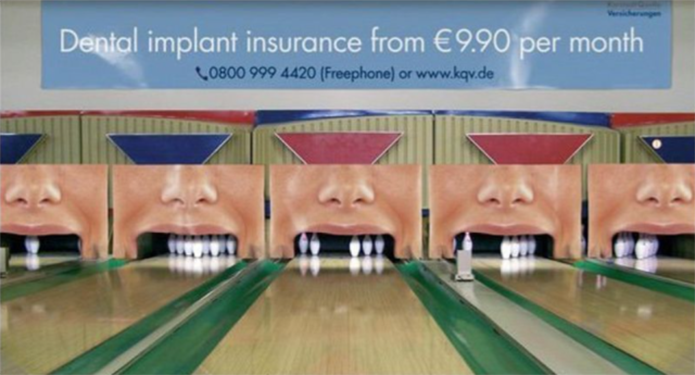
Jung von Matt; KarstadtQuelle Versicherung (2006)
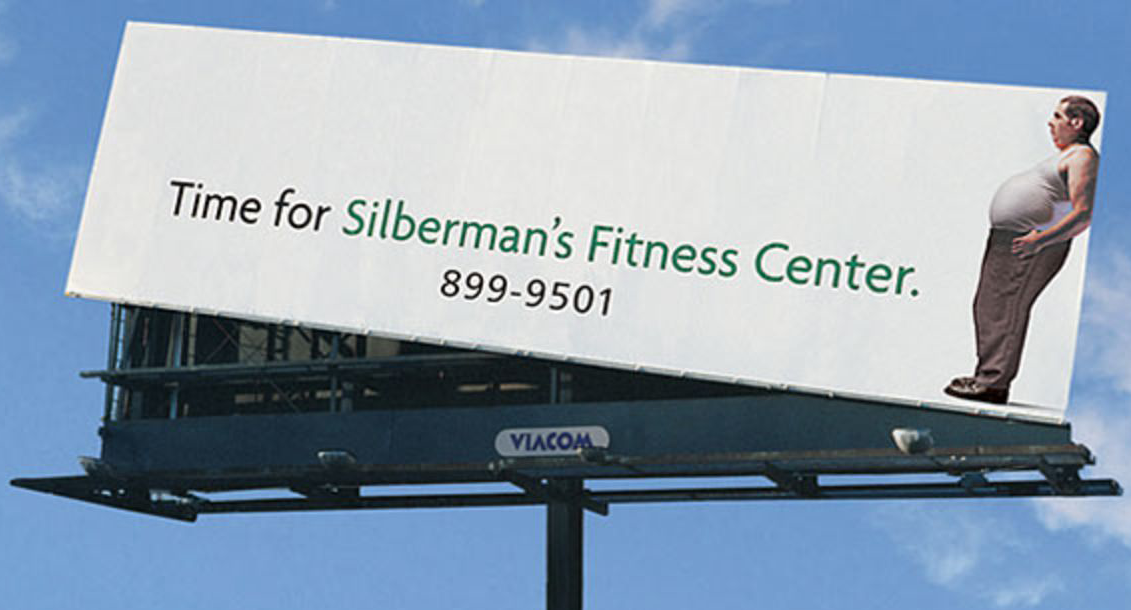
VIACOM; Silberman’s Fitness Center
Puns and Wordplay
Sometimes considered alongside sarcasm as the lowest form of comedy, but this slightly snooty approach ignores just how impactful (and skilled) a good wordplay joke can be.
The use of innuendo is common but there’s a sliding scale in terms of how simple or sophisticated it can be. Where it’s best to pitch your brand should be carefully thought out based on the profile of your audience and target market, and the medium used. This is a humour technique that can be divisive, and puns, particularly sexual innuendo, can somewhat ironically turn people off if it doesn’t feel aligned with your product.
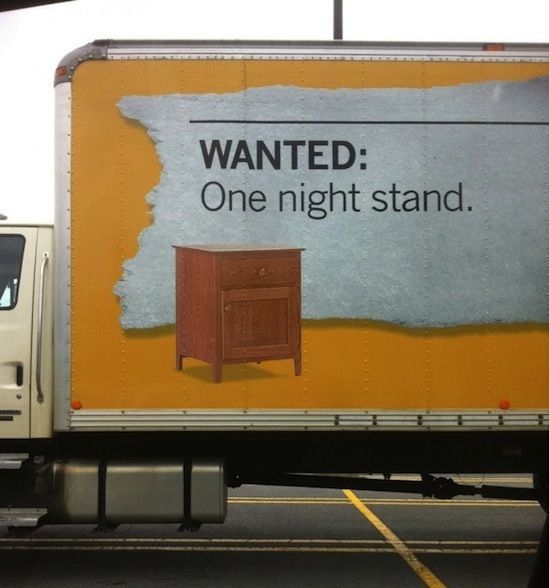

IKEA & Simonis Roofing
These are just a few of the most effective techniques, but it’s not an exhaustive list, and you might still be thinking that none of these styles or techniques quite align with your brand or message. That’s fine, because we’re now going to step you through 5 rules of using comedy in marketing that will help you tailor your approach.
HOW TO USE COMEDY IN MARKETING
Every product, every campaign, every brand is different, but these 5 rules always apply:
- Know Your Audience
- Know Your Product
- Make It Funny
- Make It Inclusive
- Avoid ‘Avoidance’
We’ve called these rules, but you’ll notice that for each there’s a large degree of variation. There’s no easy prescription to getting comedy right, but there are methods and considerations to give you the best chance. Humility is your friend here. During production you can never be certain that a comedic approach will land, but you can absolutely give it a better chance, and make sure that you have alternative options.
Ok, let’s dive in…
1. Know Your Audience
Brands can now target with greater precision than ever before. Like it or not, social platforms afford a window well beyond the basic demographic data available previously. When it comes to comedy, this specificity is key.
Demographics are important, but cultural differences are pivotal. It’s possible, though not easy, to craft humour that has appeal across genders, ages, education (and as we’ll discuss later this inclusivity is crucial). It’s not so easy, however, to reach across linguistic and cultural divides.
‘We may all laugh, but what makes us laugh very much depends on where we’re from, the language we speak, and the historical context with which we’re most familiar’
Christian Blauvelt (Arts Journalist)
Having said all that, trying to predict comic appeal can be a fool’s errand. The film Airplane! leans heavily on English language specific jokes such as…
‘Surely, you can’t be serious?’
‘I am serious, and don’t call me Shirley.’
…and yet the film polls higher amongst Latin American critics than any other group!
Our first example of the oft baffling question of what makes people laugh, and what makes some people laugh more than others. How can this uncertainty be navigated if you want guaranteed success for your marketing buck? One solution is simple and humble (and no, it’s not to target Latin American critics). Crowdsource it and crowdtest it. In the Comedy Crowd’s 10,000-strong global community of creators we’ve realised that it’s far more effective to set a brief and have a diverse community make content that they love (and that people like them will love).
What you find is that creators bring their own cultural specific interpretations and references to the comedy. This gives you a bank of content that can be shared with the audiences who identify with it. A far superior strategy to putting all your eggs in the basket of one creator.
2. Understand Your Product
You understand what your product does, who it’s for, why it’s great (not sure we can help you if you don’t!). Well, guess what, there’s a science bit…
In a 2006 study, Gulas and Weinberger proposed 4 different types of product, each requiring a distinct approach when it comes to comedy. Products are classified according to their ‘involvement’ and the extent to which they are either functional (practical) or hedonic (enjoyable). Involvement refers to the degree of importance that a viewer listens attentively and understands the key information about the product.
This is a useful consideration when thinking about how comedy could work best for your brand, but it’s only a guide, and there are always exceptions to the rule.
The types of products are summarised below:

Humour can be used in all cases, but its effectiveness varies, and the comedy has to be tailored, particularly if there are important messages about the product that need to be conveyed. A meta analysis by Martin Eisend (2009) suggested the following approaches were optimal for each type of product:
White goods – It is most important that the audience accepts and understands the key messages. It is not necessary for them to like the content, though this doesn’t cause harm to the brand. Comedy can help particularly where it is ‘issue relevant’, especially where it helps the processing of the key message.
A great example is Klarna – a Swedish bank that offers online financial solutions for businesses. Not an obvious breeding ground for comedy. But their ‘I Wish I’d Bought It With Klarna’ series showcases amusing events involving online shopping disasters.
This promotes their ‘Pay Later’ scheme, allowing consumers to pay when they are happy. It creates interest and draws attention to the issue in an engaging way, without making fun of the brand itself. Nice.
Blue Goods – There should be a focus on how the product solves a problem so use of comedy has to complement this aim.
Dollar Shave Club is a great example. They use hyper exaggeration and an amusing performance to deliver what would otherwise be simple messages about the functional benefits of their razors.
Red Goods – It is key that content is authentic and emotive. In this instance it is important whether the viewer likes the content, and so humour can assist, both where it is relevant to the product or a more general device.
Buying a Volkswagen from an old lady is a great example.
They need to get key information across (that the car is safe, sturdy, reliable), and purchasing a car is more on the hedonic than functional end of the spectrum.
Yellow Goods – Effectiveness depends on creating an emotional appeal for the product that is unique to the brand. The viewer must like the content. This is the most fertile ground for well-executed comedy, and there are endless examples of ‘yellow goods’ doing this effectively. See Innocent Drinks and Wendy’s ads below.
This demonstrates that it is important to identify how comedy fits in the overall aims of any brand-related content. Brands may need to dovetail humour alongside the need to convey information or stir emotion, and this will impact on the style and emphasis of comedy required.
3. Make It Funny
‘It’s not that funny things happen to funny people.
It’s that funny people see the things that happen to them in a funny way.’
Andrew Tarvin
We’ve already discussed that incorporating humour into a message is not a ‘free hit’. It can distract from other messaging, and this might be a price worth paying if it improves perception of the brand, but if the joke falls flat it compromises the whole endeavour. Failed attempts at comedy will hurt (metaphorically speaking, unless you count Jackass as comedy).
The way to avoid this reputational risk is of course to make something that is genuinely funny to the audience you are targeting. The quickest shortcut to getting this right is volume and testing. Lots of ideas and lots of feedback, both of which need to emanate from your audience (see Rule 1).
Let’s look at what makes an idea funny. Now, this might feel like a formulaic approach to comedy, and formulas and conventions instinctively feel like they have no place in this creative space. It feels like the sort of approach a good comedian would deride, bristling at the thought that their specialist craft could be distilled into anything resembling a set of ‘how to’ steps.
But comedy is formulaic. There is no one formula, but there are a variety of reasons that something is funny, and we can generally codify them.
The starting point for comic ideas is startlingly simple. Take a normal situation and reinterpret it with an incongruity. This incongruity can be referred to as a violation because it ‘threatens a person’s well-being, identity, or normative belief structure’ (Veatch 1998). Amusing violations might manifest as a social violation (fart in a lift), cultural violation (wearing a tuxedo to a skate park) or just plain old fashioned tickling. Each is a threat of some sort, though arguably the confined flatulence is somewhat more grave than the others. Here are some examples of violations in created content:
- Linguistic (e.g. a pun or mispelling) – ‘The only thing flat-earthers fear, is sphere itself’
- Physical (e.g. violence) – Terry Tate, Office Linebacker
- Logical (e.g. heightened reality or absurdity) – The Ministry Of Silly Walks
There is quite the arsenal to choose from, but comedy can be polarising and unpredictable, so volume and testing are your friend.
If you’re looking to structure a sketch, whether that’s 20 seconds or 2 minutes, we have a separate in-depth guide written by Comedy Coach Chris Head.
4. Make It Inclusive
Funny alone isn’t enough. These last two rules explain a couple of elements that your comedy content must have if it is to have the positive effect you desire. These are drawn from a 2016 study by Caleb Warren and Peter McGraw, When Does Humorous Marketing Hurt Brands.
The first refers to the target of the violation. Your comedy can be inclusive or exclusive depending on who is the ‘butt’ of the joke. This consideration is separate to how funny the joke is. Exclusive comedy could be very funny to your audience, but they will still form a negative association with your brand if it smells like mean spirit.
Comedy is rooted in traditions of mocking the powerful, and pushing the boundaries of acceptability – but that strand of comedy isn’t a prudent approach here. The net result will be that the viewer likes the content, but has a less favourable attitude to the brand. Here is an example from that 2016 study – spot the inclusive and the exclusive violation:
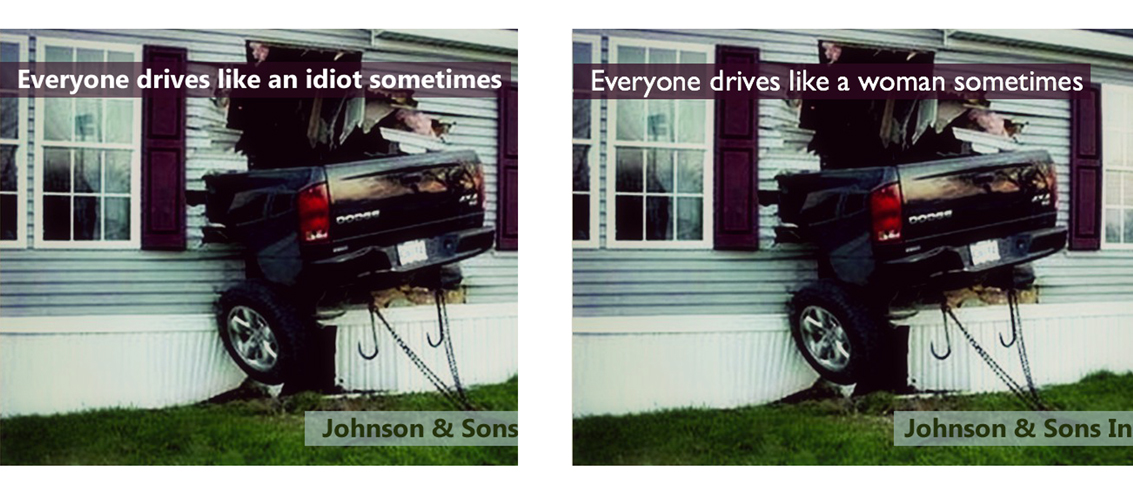
This is a pretty extreme example as it’s both exclusive and offensive (though in the study the sexist example did score well for humour). Here’s a neat summary of what you should be looking for:
‘Inclusive violations tend to focus on the absurdity of a situation, the foibles of the world, or the imperfections of human nature’
(Warren & McGraw 2016)
This definition of inclusivity isn’t about brands virtue signalling or trying to associate themselves with images or themes of diversity that might seem totally irrelevant to the product (we’ve all seen plenty of examples that feel like tokenism). Rather, this is about embracing humour that makes fun out of something that doesn’t single out a particular group.
Take Innocent Drinks for example. During the covid lockdown in 2020 they ran a competition based around ‘useless things to do on your sofa’, rewarding the best entries with prizes and making charitable donations.
This is relatable and topical, which is a great starting point. But even more important here is the use of the crowd and user-generated content. By running a relatable crowdsourcing competition, Innocent have made the humour focus on something we are all experiencing together, rather than just showing their own interpretation of the event.
And there’s one other thing to consider…
5. Avoid Avoidance
Some of the violations that induce laughs also create emotions of disgust, fear or shame. Let’s not dwell on what this says about the human condition. Suffice to say these reactions are actually more harmful to your brand than anger, envy, or confusion (Carver and Harmon-Jones 2009; Chapman et al. 2009; Lerner and Keltner 2000) because they prompt avoidance – kinda the opposite of what we’re going for!
This is another scenario where content can be funny, but have the opposite of the desired effect from a branding perspective. In particular, content that includes what is termed a ‘purity’ violation was found to induce a negative reaction to the brand (moreso even than a ‘harm’ violation). This is particularly true for food and drink products. Take a look at the examples below:
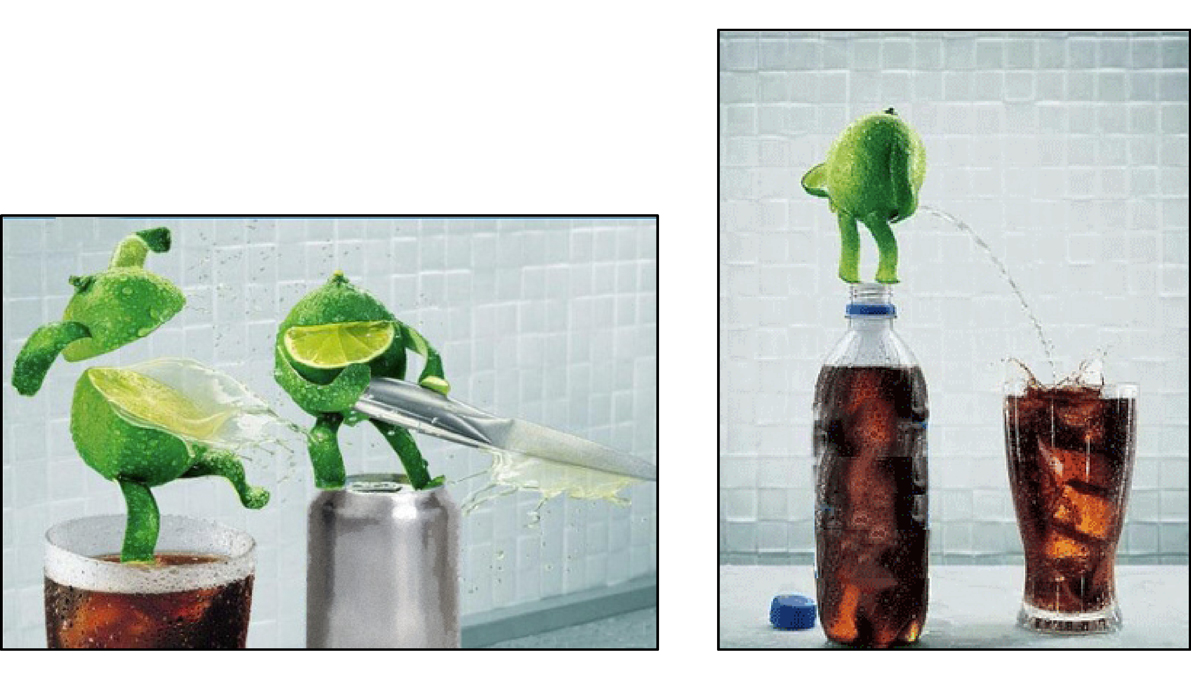
The image on the left is pretty distressing if you have an affinity to limes. You might think that the violence depicted would have a very negative effect on the brand. In fact it is the image to the right, based on a purity violation, that was most damaging despite being deemed to be the funnier of the two.
The lesson is to look for comic opportunities that steer clear of creating any sense of avoidance through disgust, fear or shame.
A similar example where a brand successfully avoids avoidance is Wendy’s fast food. Like Innocent they worked with the highly relatable, but potentially risky, topic of Covid in 2020 and ran a campaign titled ‘If We Can’t Hug, We Might As Well Nug.’
As we’ve already seen, wordplay can be a very simple but powerful comedic tool. The important thing to notice here is that Wendy’s have related their nugget to the comforting image of a hug, the exact opposite of avoidance. Plus they have linked it to a free offer for customers. Always a strong move.
FINAL WORDS
In spite of the hazards, comedy remains an unrivalled method for enhancing the perception of a brand and its products. It simply requires a more specialist, considered approach that is often absent when brands seek to create something shareable, especially on social media.
Seeking virality by making something remarkable can do more harm than good if the violations are not deftly crafted.
Funny alone is not enough, but by tapping into a large pool of skilled creators from diverse backgrounds, brands can create content that enhances their reputation, resonates with their audience and makes the world a happier place.
Interested in using humour with your brand? See how The Comedy Crowd can help.


